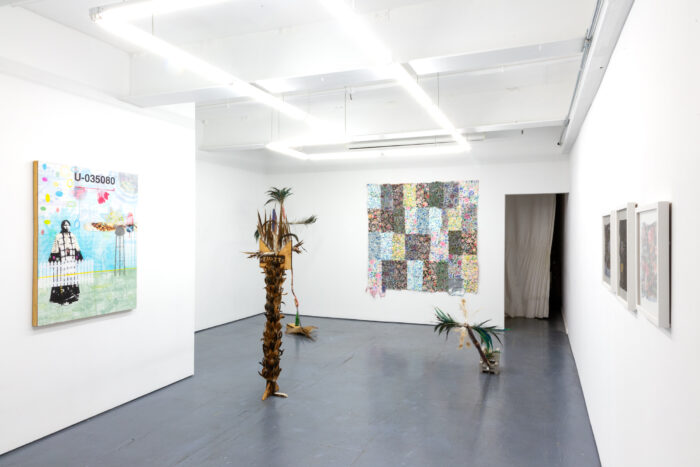


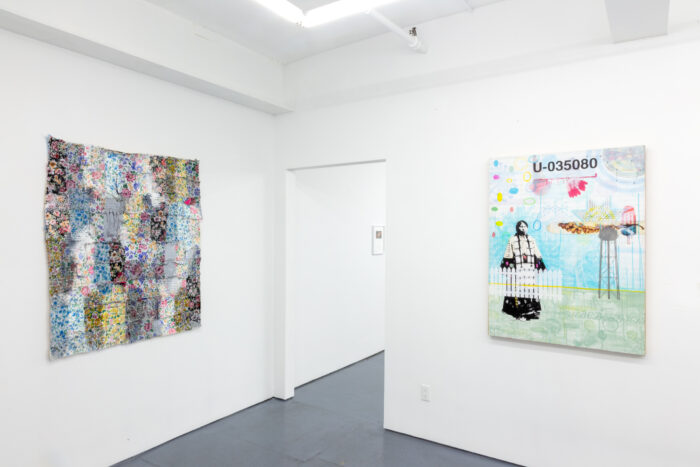

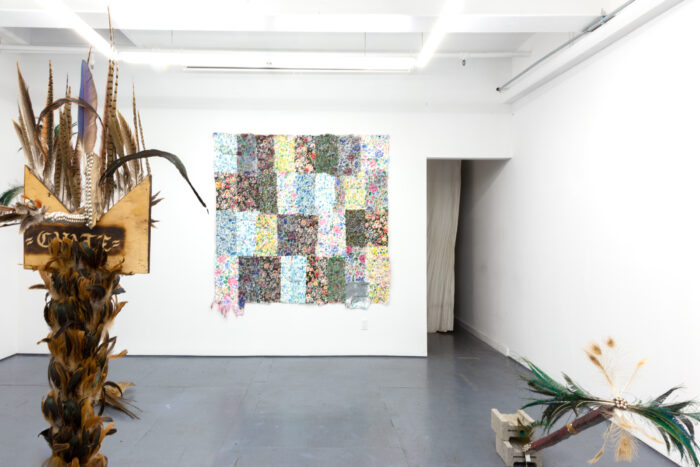
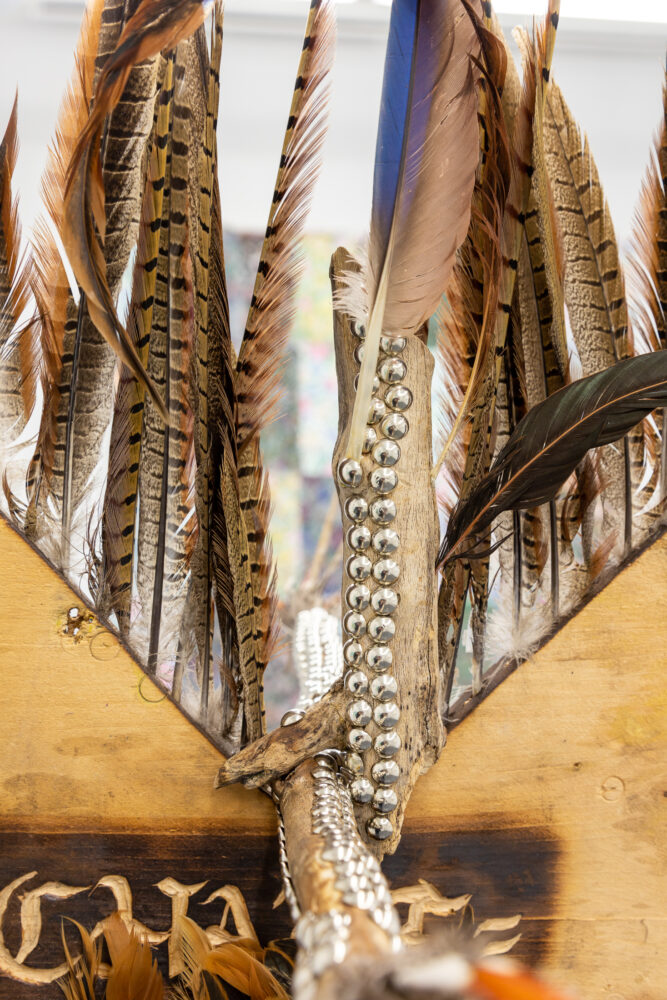
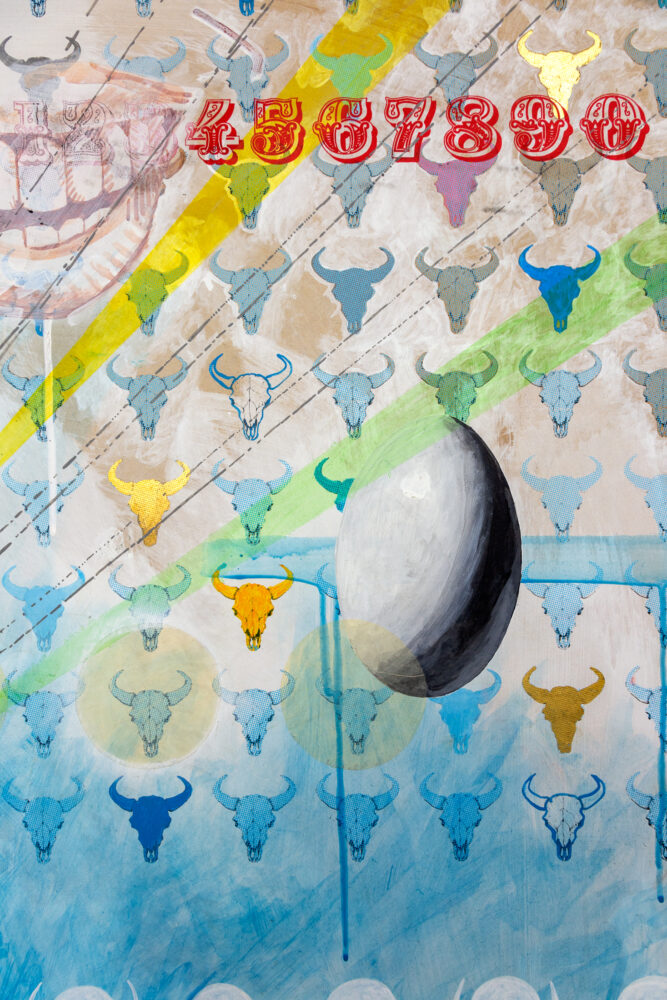

Patchwork at Transmitter gallery curated by Eva Mayhabal Davis
Manuela Gonzalez, Esteban Ramón Pérez, and Micheal Two Bulls
January 9 – February 14, 2021
All images courtesy of Transmitter Gallery
Transmitter is pleased to present Patchwork, a group exhibition – featuring Manuela Gonzalez, Esteban Ramón Pérez, and Micheal Two Bulls –highlighting works that deal with the process and legacy of assembling fragmented histories. Each artist taps into historical amnesia and deep memory that is both collective and personal: creating works that include paintings, sculpture, and collage, these pieces exist for a particular gaze, space, and time. As such, they each embrace the missing links of land and familial ties due to an interconnected reality of settler colonialism, and suggest that processing patchworks of history is a stepping stone for a radically imagined future.
While defining settler colonialism, historian Roxanne Dunbar-Ortiz makes an urgent call for unity in the face of present dire repercussions that have ensued in division. She suggests a “radically reconfigured” continent that will require “the full support and active participation of the descendants of settlers, enslaved Africans, and colonized Mexicans, as well as immigrant populations.” The conversation amongst the following artworks is a symbolic beginning that prioritizes care, sensibility, and honor in telling these stories.
Manuela Gonzalez’s paintings, abstract familiar domestic patterns that are quotidian to our homes, kitchens, and memories. Floral prints are deconstructed by textures and quilted together as blurry memories of softness, home, and uneasy patterns. Gonzalez navigates memories that are remnants of dresses or have a vague similarity to her childhood home in Colombia. The patterns repeat in slightly different tones and abstract according to the textures of the patchwork canvas.
In sculptural assemblages, Esteban Ramón Pérez brings together fragments of religion—primarily Catholic impositions—for example, crosses in reverence to an Indigenous spirituality. Each work is a conversation of symbols, feathers, and words that carry residuals of their lost and stolen heritage. With precarity, Ramón Pérez fabricates from memories that have survived the multiple layers of American Southwest history. Ultimately his work recalls Mexicanidad, an imposed border, and cultural homogenization that is an ongoing staple of contemporary settler colonialism.
Micheal Two Bulls presents landscapes, in silkscreened collage, with buffalo motifs in shades of primary colors, with repeating rows of overlapped carnival tokens: a ferris wheel, Mickey Mouse, and popsicles. There is a sense of mockery of American icons that are as innocent as they are inhumane. These pieces reinforce the history of strategic genocide of the American Buffalo by the USA, so as to also eradicate the Native populations that lived with these animals. Two Bulls presents a contemporary ledger of playful motifs imbricated with historical images, most prominent is the pile of buffalo bones from a photo taken in the 1870s.
